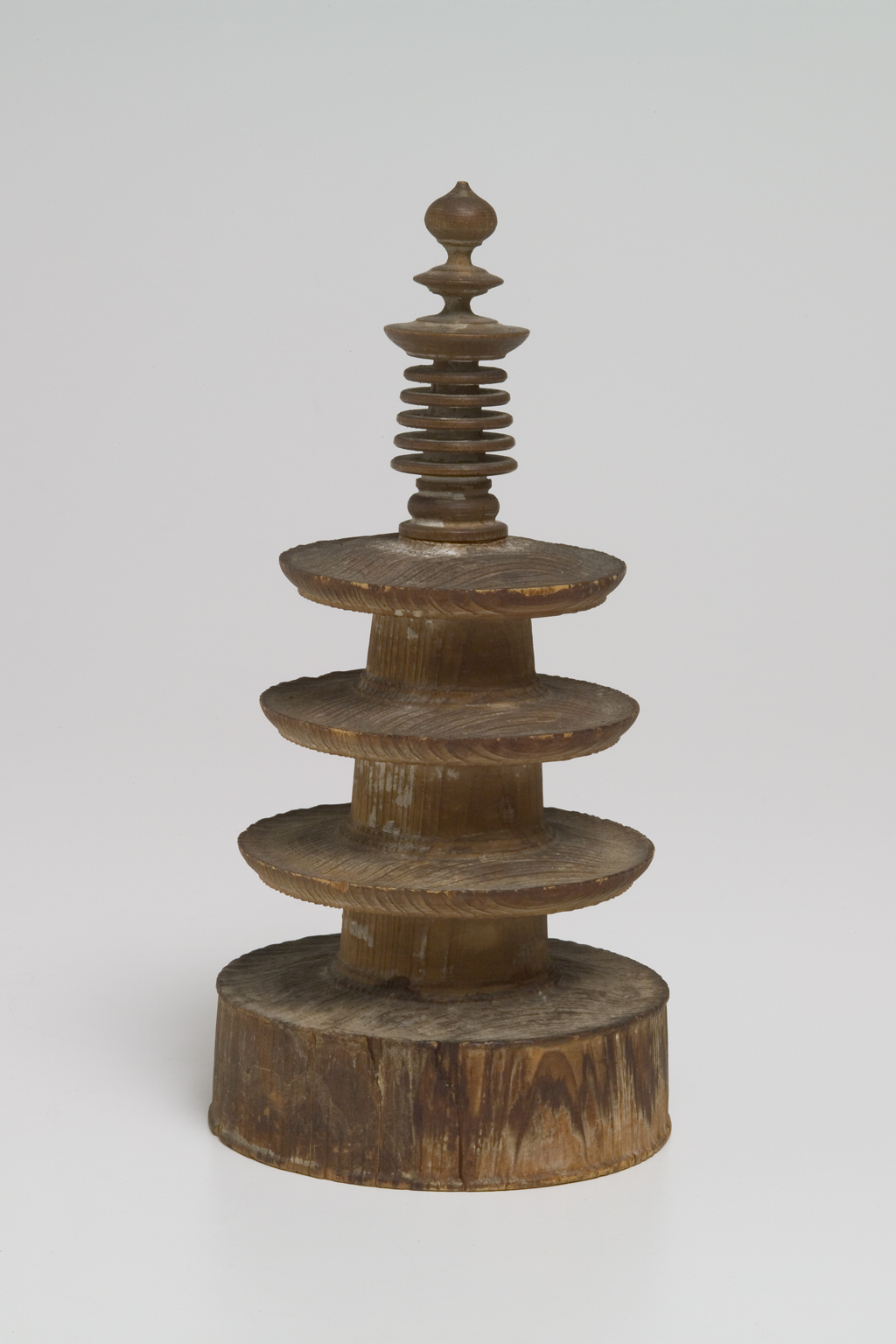Sacred Space and Japanese Art at the Spencer Museum of Art
Entry by Emily Cowan
In the Buddhist tradition, full-size pagodas function to house relics, sacred writings, and other treasures. This miniature pagoda from Japan is modeled after one of the Hyakuman-tō (One Million Pagodas) commissioned by Empress Shōtoku (718–770) as an offering to the Buddha for the protection of the capital during the rebellion of Emi no Oshikatsu (Fujiwara no Nakamaro) of 764. Following their completion in 770, the pagodas were dispersed in sets of 100,000 to each of the ten main temples in Japan: Daianji, Kōfukuji, Gangōji, Yakushiji, Hōryūji, Saidaiji, Tōdaiji, Kawaradera, Sūfukuji, and Shitennōji. At present, only about 40,000 pagodas remain, many of which are located at Hōryūji.
This particular pagoda consists of a base below three stories and a spire (sōrin). Because the sōrin at the top was later glued to the body of this pagoda, it is unknown if there is anything inside it. Each one of the original Hyakuman-tō pagodas had a chamber inside the body where written protective incantations, known as darani, were placed. These written incantations are considered “Dharma relics” and are thought to be as sacred and miraculous as the Buddha’s corporeal remains. The dedication of Hyakuman-tō within the sacred spaces of temples provided peace and protection of the realm.

